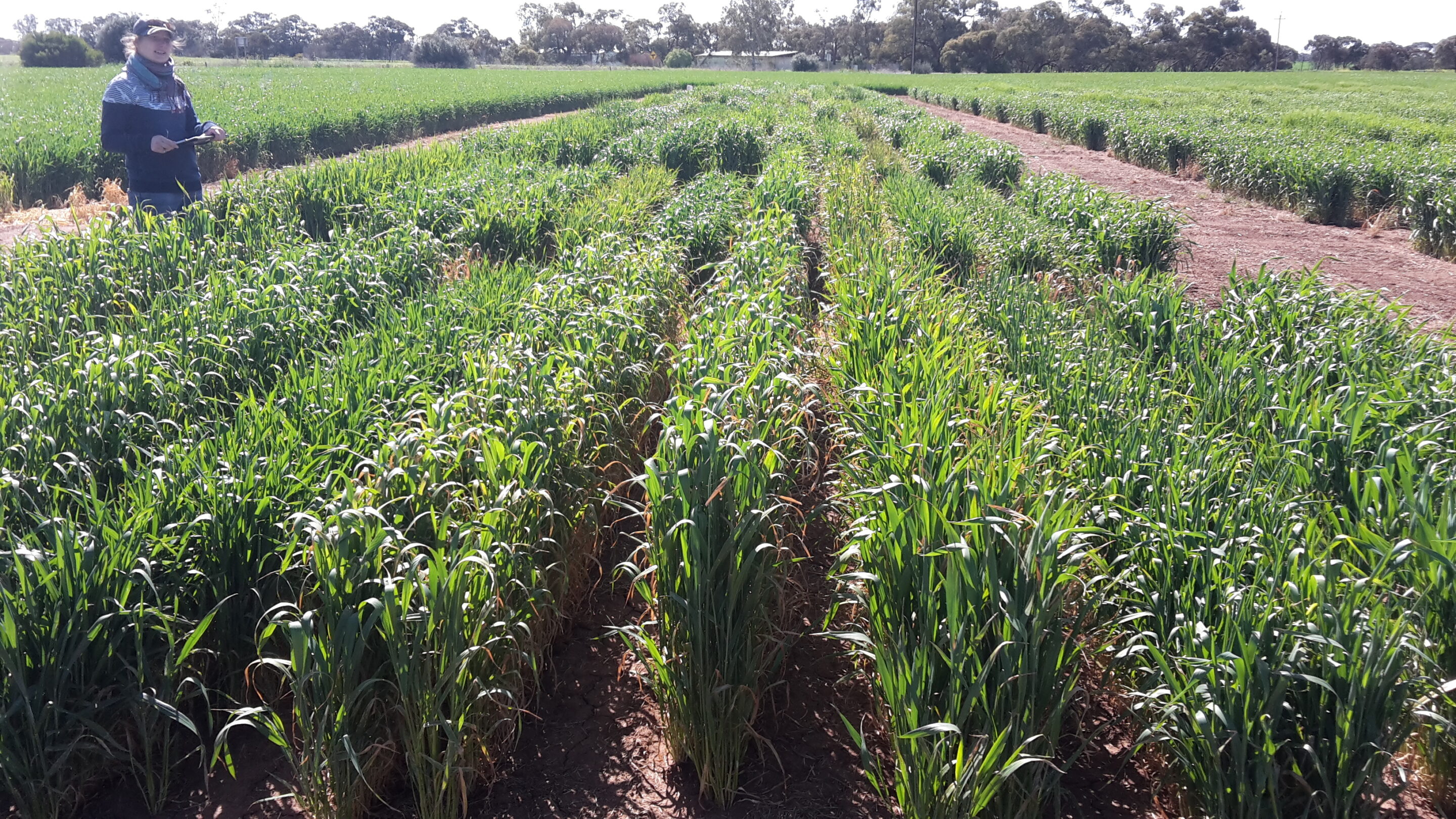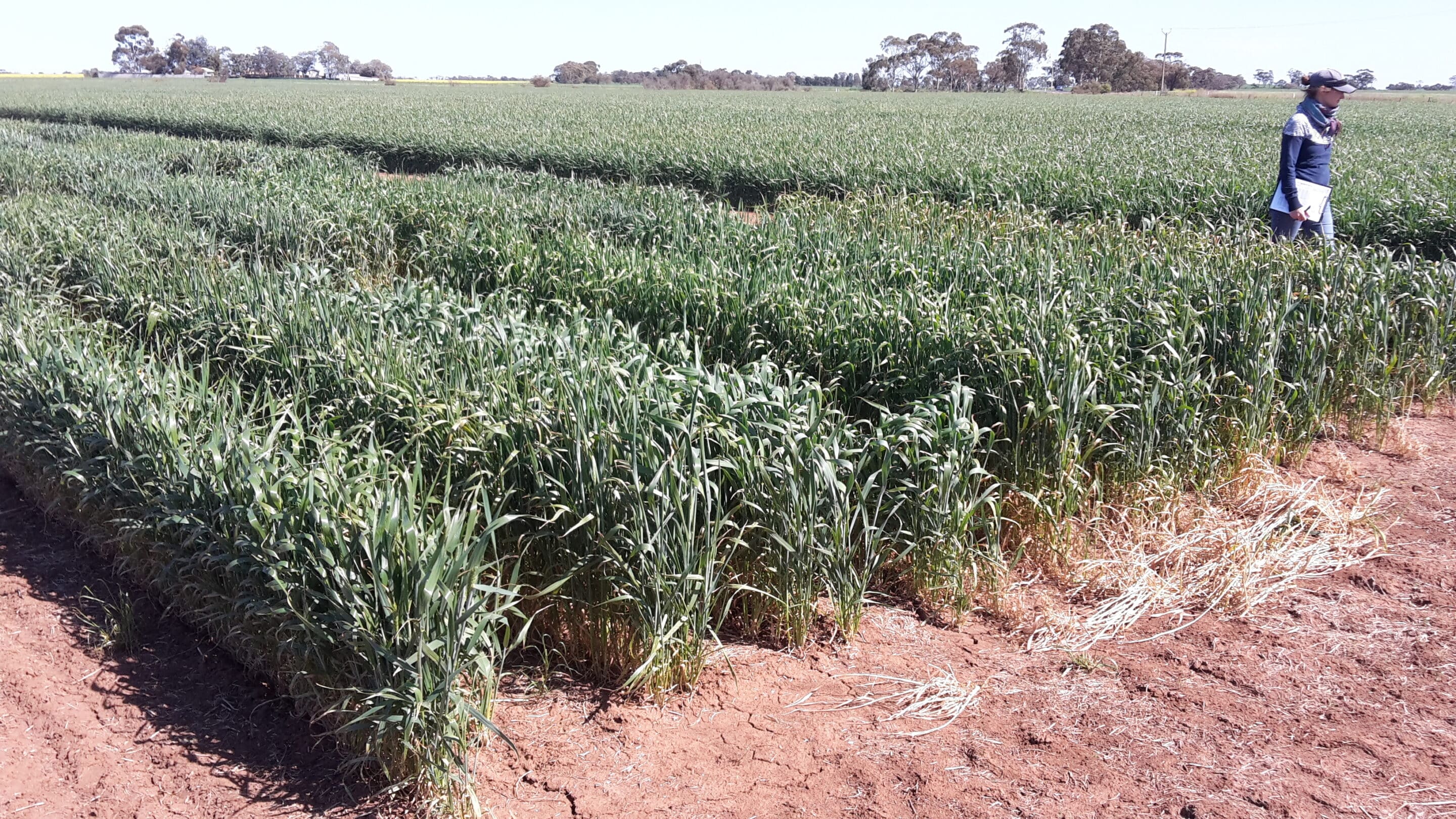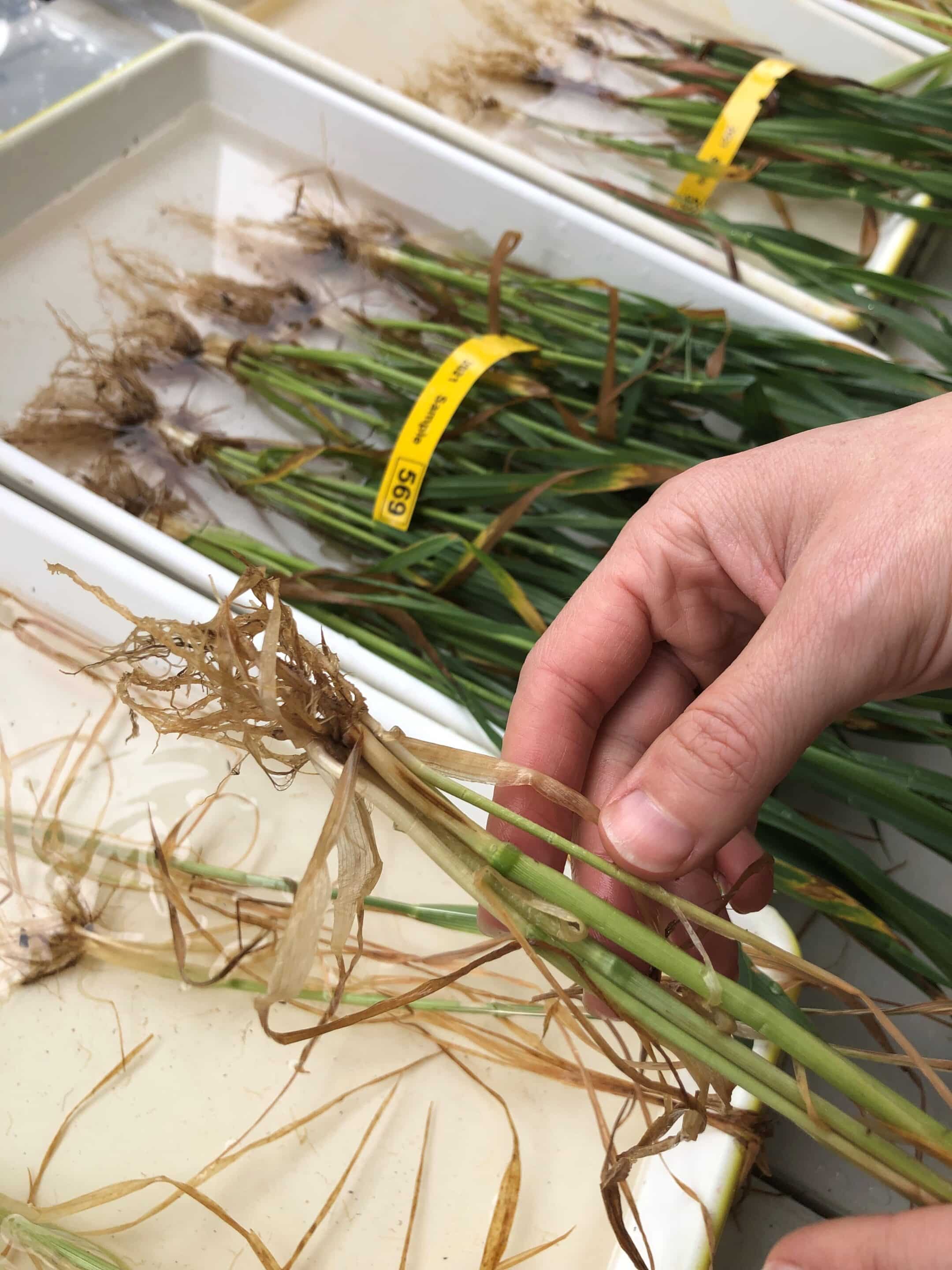START
FINISH

Summary
Salinity stress has been estimated to cost Australian agriculture up to $1.3 billion annually. In South Australia, up to 50 per cent of cropping areas are susceptible to transient salinity and associated production loss. Increasing the salinity tolerance of wheat crops would reduce production losses.
A salinity tolerant bread wheat line – Mocho de Espiga Branca – was successfully crossed with Australian wheat variety Gladius in previously funded SAGIT research. This project aimed to grow selected lines from this cross in a field environment to determine whether incorporating the traits of the salinity tolerant line had any impact on yield.
Background
Up to 50 per cent of South Australian cropping land can be affected by transient soil salinity and impact crop yields. However, by breeding salt tolerant varieties, researchers hope to close the yield gap and improve the resilience of South Australian grain harvests.
In SAGIT-funded research projects UA317 and UA418, researchers from the University of Adelaide successfully grew a Mocho de Espiga Branca x Gladius recombinant inbred line (RIL) under both control and salt stressed conditions at the Australian Plant Phenomics Facility’s Plant Accelerator. They then measured for 37 phenotypic traits including plant biomass, plant growth, ion content and grain production.
Mocho de Espiga Branca appears to offer South Australian wheat growers a novel source of genetic diversity for saline tolerance as well as other abiotic and biotic stress tolerance mechanisms.
Research Aims
The core objectives of the project were to:
- Assess growth and yield of a novel bread wheat population in a saline field.
- Determine the genetic regions that translate between the glasshouse (as per SAGIT project UA418) and field experiments to identify the regions of the plant’s DNA responsible for the salinity tolerance of these lines.
- Determine which lines are carrying these genetic regions for improved salinity tolerance for inclusion in Australian germplasm.
In The Field
Seed selected for consistent flowering times, identified during the previous SAGIT research, was multiplied for field trials under saline conditions in 2021 as part of this project.
In total, 64 unique Mocho de Espiga Branca x Gladius RILs with similar height and flowering time to Australian wheat variety Gladius were selected for field trials.
A mild to moderate saline field site near the University of Adelaide’s Roseworthy campus was used. This field site had an average electrical conductivity (Ece) of 2.35 dS/m, with enough salinity to affect plant growth and yield but not enough to kill sensitive lines.
The 64 RILs and Gladius were sown in two-row breeders plots, surrounded by a border of Saintly durum wheat. Establishment counts and soil conductivity measurements of the individual plots using an EM38 monitor were taken four weeks after sowing. Soil cores were obtained and sent for analysis to quantify pH, soil carbon, soil texture and nutrient/element composition as well as the presence of subsoil constraints, such as salinity.
Soil cores and EM38 measurements were obtained at flowering to determine if the salinity had changed during the growing season. At flowering, the penultimate leaf before the flag leaf on the main tiller (Flag leaf-1) was taken for sodium, potassium and chloride analysis. Plots were harvested and the seed from each plot weighed.
The performance of each line was standardised to the average concentration of sodium in the trial area using the known EM38 measurements below each plot to allow comparison between RILs and Gladius grown across the paddock.
Results
Researchers were able to categorise the RILs grown in the trial to narrow down the best performing varieties.
Three lines with high salt tolerance were identified, with yield improvements of between 5 and 28 per cent. These lines accumulated 10 times as much leaf sodium compared to Australian varieties. These lines have the unique salinity tolerance mechanism from Mocho de Espiga Branca, which allow them to accumulate high levels of sodium and have a better yield.
A further five lines have similar yields to Gladius but with enhanced salt tolerance. With molecular markers designed with salt tolerance traits, these eight RILs could be crossed to current elite germplasm, such as Calibre and Vixen, to introduce enhanced salt tolerance into current material.
Project Participants
University of Adelaide: Associate Professor Stuart Roy, Laura Short, Christine Trittermann, Dr Abed El Habti, Dr Julian Taylor, Alistair Pearce
GRDC (formerly University of Adelaide): Allison Pearson
The Problem
Approximately 50 per cent of farms are at risk of showing signs of salinity in South Australia. Previous SAGIT research had developed a salinity tolerant bread wheat line, Mocho de Espiga Branca x Gladius, however, it was unknown whether the incorporation of traits from this variety could enhance yield in a field setting.
The research
This project assessed the growth and yield of novel lines of bread wheat population with enhanced salinity tolerance in the field.
More information
A/Prof Stuart Roy, University of Adelaide
T: 08 8313 0549
E: [email protected]
Value for Growers
The introduction of the salt tolerance trait into current elite Australian germplasm would allow the development of germplasm better adapted to subsoil constraints found on SA farms.
Further evaluation of the material at different sites over different years is required, as well as pre-breeding to introduce the traits into germplasm suitable for breeders to use. Researchers have recruited a PhD student to follow up on this work, with the material currently undergoing further field and greenhouse evaluation. Additional funding is being sought to continue this work.
Latest Research Projects




